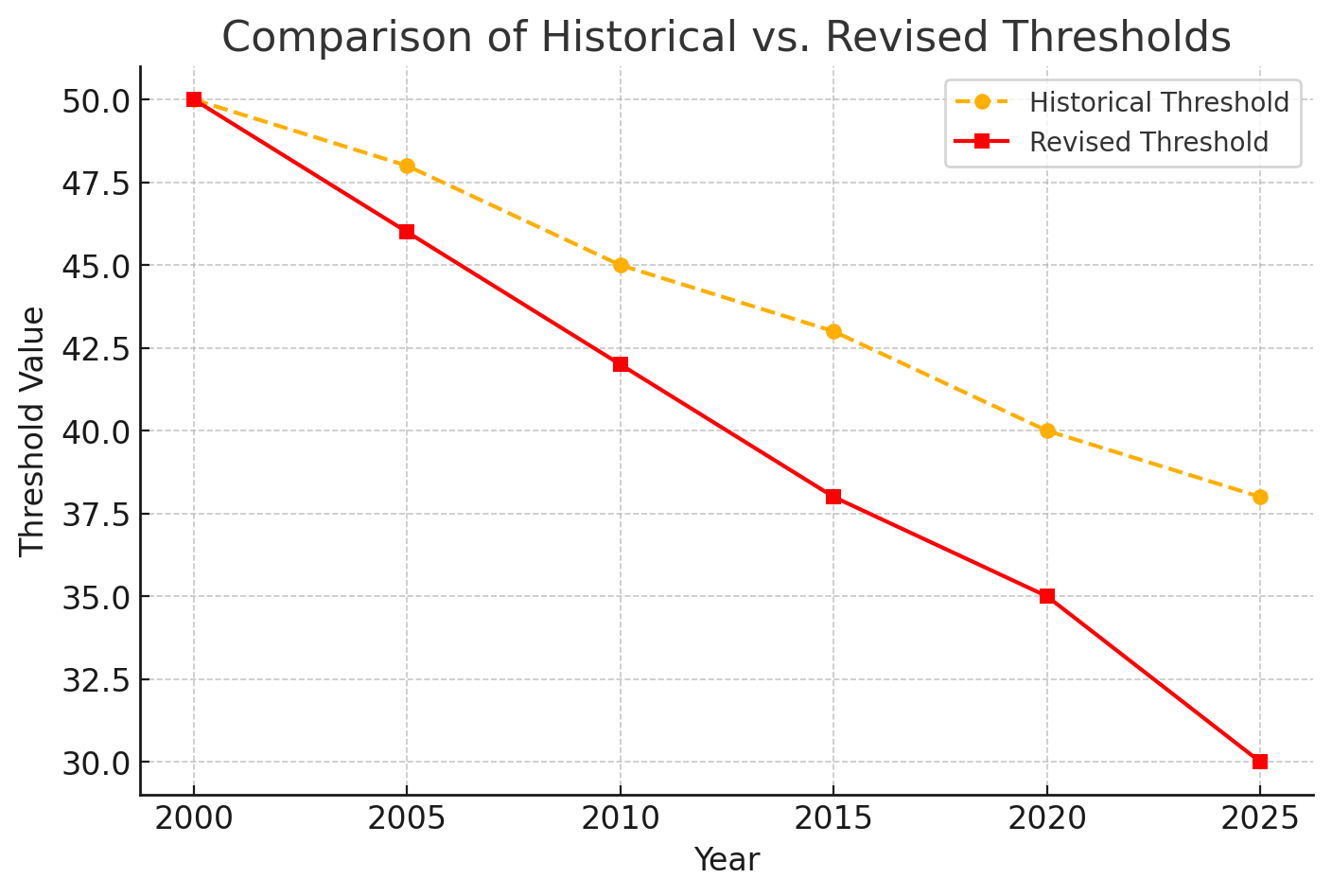Revised Threshold vs. Historical Threshold: Differences, Importance, and Applications
Introduction
In medical and pharmaceutical sciences, establishing diagnostic and treatment criteria plays a vital role in improving public health. Two essential concepts in this field are the Revised Threshold and the Historical Threshold. Revised thresholds are typically updated based on new research, clinical guidelines, and scientific advancements, whereas historical thresholds were previously used standards that have been modified due to scientific progress.
Revised Threshold
A revised threshold refers to an updated or modified level used in medical decision-making. These changes typically result from new research, extensive clinical analyses, and scientific advancements.
Examples of Revised Thresholds
- Diagnostic test results: Adjusting fasting blood glucose levels for diabetes diagnosis.
- Treatment initiation criteria: Lowering the target blood pressure level for initiating antihypertensive therapy.
- Drug dosage adjustment: Modifying drug doses based on new efficacy and safety data.
Real-World Examples of Revised Thresholds
- Diabetes Diagnosis: The fasting blood glucose level was reduced from 140 mg/dL to 126 mg/dL.
- Hypertension Treatment: The threshold for initiating therapy was lowered from 140/90 mmHg to 130/80 mmHg.
- LDL Cholesterol Level: The optimal LDL threshold was lowered from 160 mg/dL to 70-100 mg/dL.
Historical Threshold
The historical threshold refers to a level that was previously considered the standard but has been revised due to scientific advancements. These thresholds serve as a reference for evaluating trends and changes over time.
Examples of Historical Thresholds
- Fasting Blood Glucose: The past diagnostic threshold for diabetes was 140 mg/dL, but it has since been reduced.
- Cholesterol Guidelines: LDL levels up to 160 mg/dL were previously considered normal, whereas lower values are now recommended.
- Blood Lead Levels: Older standards allowed higher lead concentrations, but recent studies have shown even low levels can be harmful.
Real-World Examples of Historical Thresholds
- Lead Levels in Children's Blood: The permissible limit was previously 10 μg/dL, but research has shown that even levels below 5 μg/dL can negatively impact brain development.
- Cholesterol Levels: Older guidelines permitted higher LDL levels before initiating statin therapy, whereas today, early intervention is recommended.
- Blood Pressure Standards: Previously, 160/100 mmHg was not considered treatable in elderly patients, but the current threshold is 130/80 mmHg.
Comparison of Revised and Historical Thresholds
| Feature | Revised Threshold | Historical Threshold |
|---|---|---|
| Definition | A new standard based on updated findings | A past standard before scientific revision |
| Purpose | To improve accuracy and effectiveness | To analyze past changes |
| Examples | Lower glucose levels, reduced LDL, lower BP | Higher glucose, LDL, and BP thresholds |
Conclusion
Updating diagnostic and treatment thresholds plays a crucial role in enhancing public health, reducing disease complications, and improving healthcare quality. Scientific advancements enable us to define more precise criteria for diagnosis, treatment, and disease prevention.
Historical thresholds represent past standards, whereas revised thresholds are adjusted based on the latest scientific evidence. Therefore, healthcare professionals and researchers should follow the latest guidelines from organizations such as WHO, ADA (American Diabetes Association), and ACC/AHA (American College of Cardiology/American Heart Association) to make the best treatment decisions for patients.
Analysis of Historical vs. Revised Thresholds
This chart illustrates the **comparison of historical and revised threshold changes over time**. The trends displayed highlight the impact of scientific advancements and revisions in medical, environmental, and engineering standards.
Chart Analysis
- Historical Threshold (Yellow Dashed Line): Standards previously used for medical, environmental, or engineering assessments.
- Revised Threshold (Solid Red Line): Updates made to past standards based on new research and scientific findings.
Real-World Applications
- Medicine: Adjustments in diagnostic thresholds, such as lowering blood glucose levels for early diabetes detection.
- Environment: Reduction in allowable pollutant levels to improve air and water quality based on updated standards.
- Safety & Engineering: Revisions in earthquake safety regulations and construction standards to enhance structural resilience.
Conclusion
These changes indicate that updating standard thresholds plays a vital role in improving quality of life and reducing health and environmental risks. Keeping up with the latest standards in medicine, environmental regulations, and engineering ensures enhanced safety and public health.















